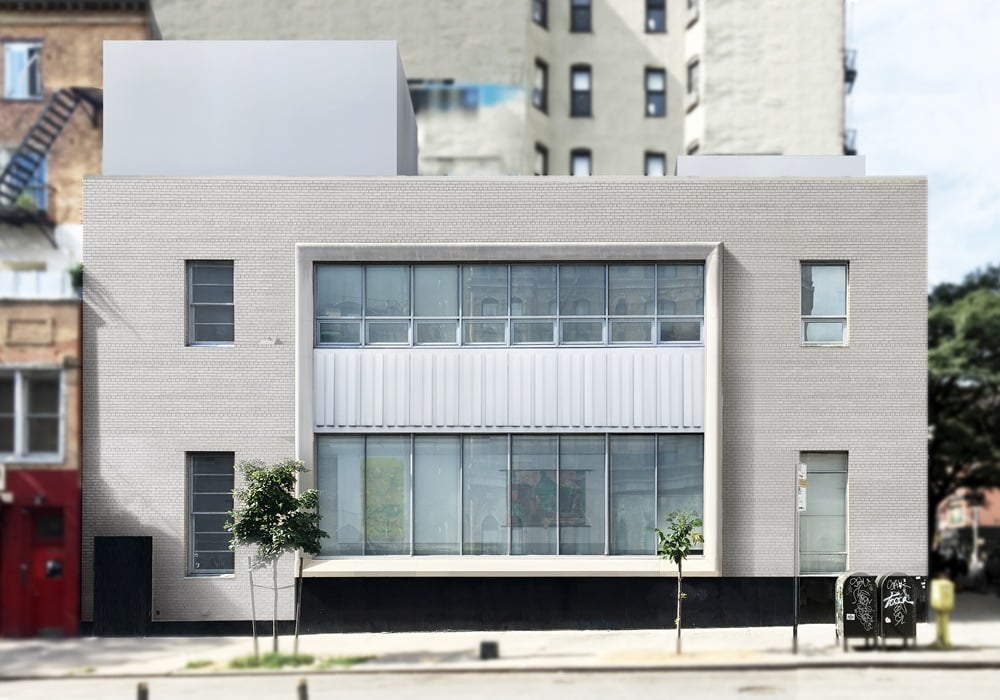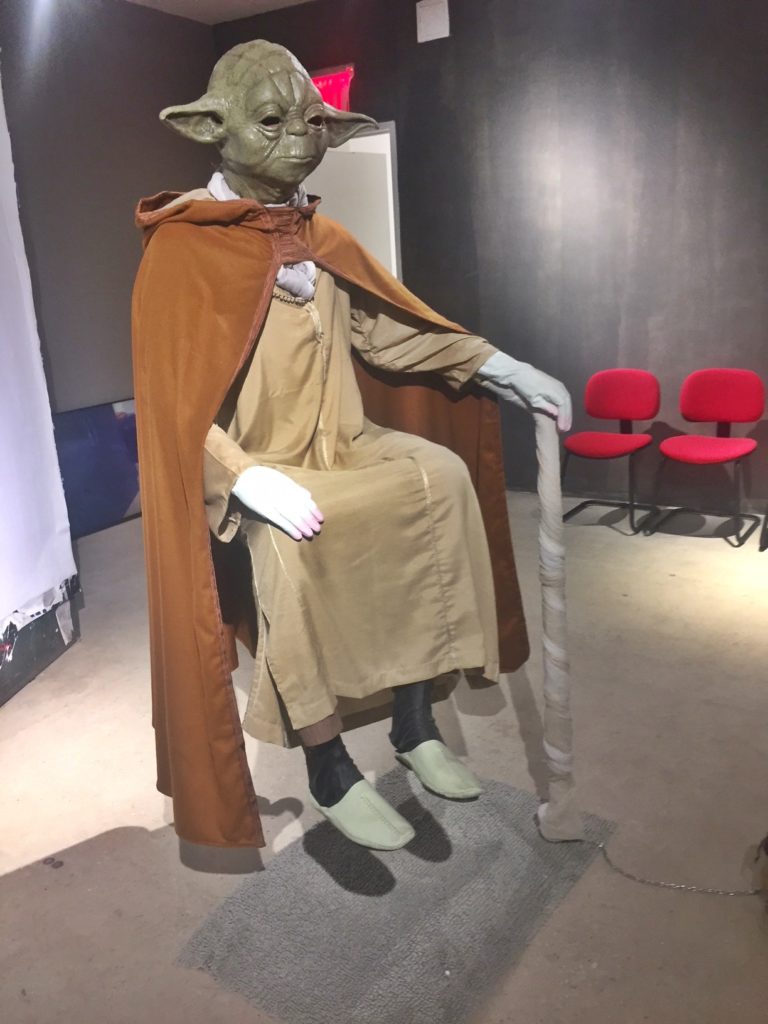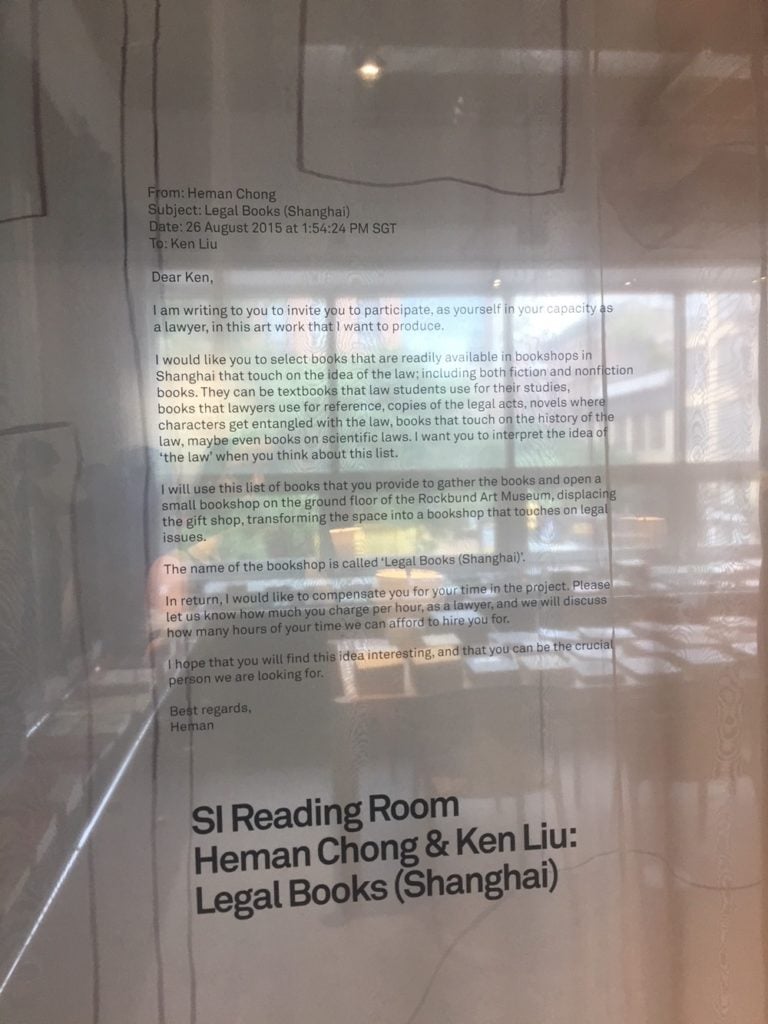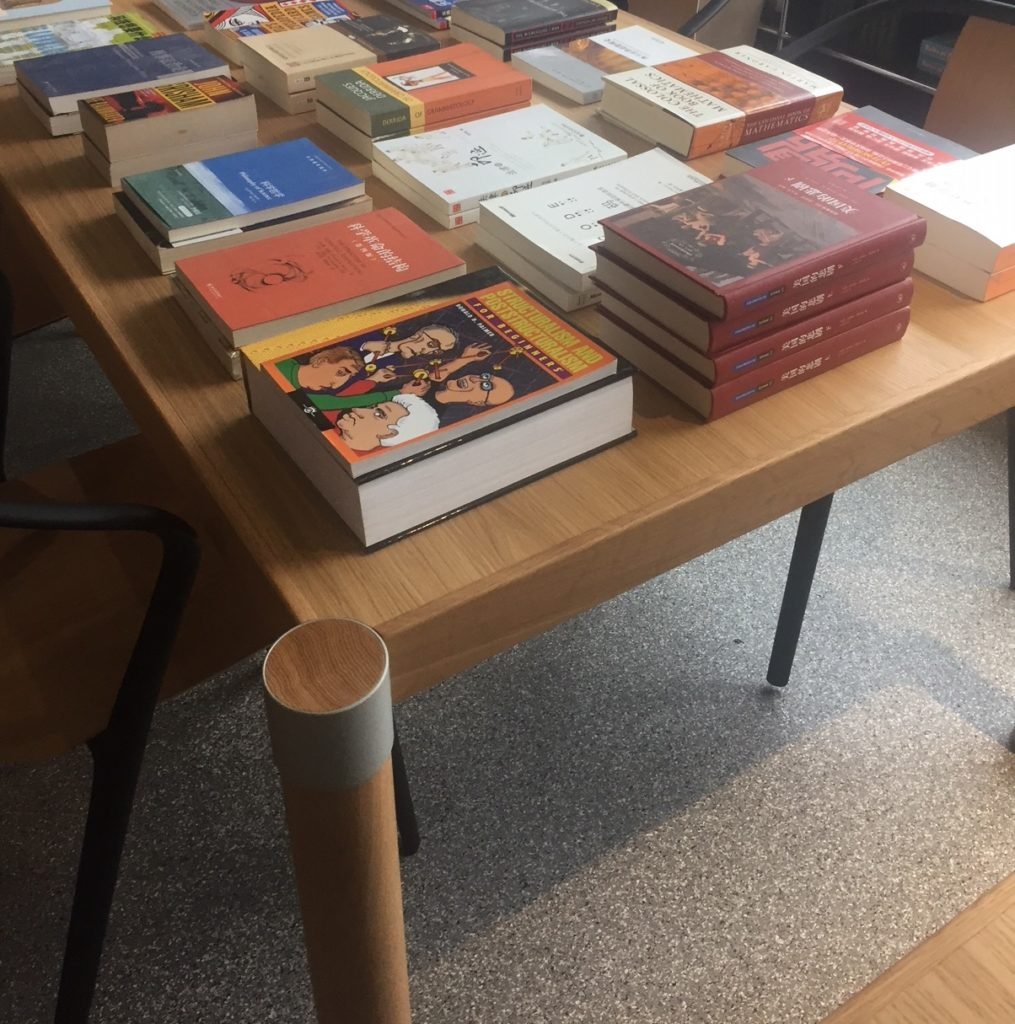On View
We’re Anything But Neutral on the Swiss Institute’s Chic New Manhattan Building
The venerable arts non-profit is opening the doors of its new Selldorf Architects-designed space.

The venerable arts non-profit is opening the doors of its new Selldorf Architects-designed space.

Eileen Kinsella

It’s sometimes difficult to tell where the art ends and the building begins at the Swiss Institute’s new home in New York City’s East Village, and that’s part of the fun.
The institute moved last year from its temporary space in Tribeca to the new 7,500-square-foot building on St. Mark’s Place, a former bank that has been dramatically (and beautifully) overhauled by Selldorf Architects. It opens to the public on June 23.
“For every single nook and cranny of the building, we said, ‘Let’s think about how that can be appropriated by an artist,'” said director Simon Castets during a press tour of the new space.

Claire Fontaine’s Yoda (2016) is part of the inaugural Swiss Institute exhibition “Readymades Belong To Everyone.” Photo by Eileen Kinsella.
A custom-built reading room on the second floor is a good example. There, Hans Haacke, the German-American artist known for his work in institutional critique, has installed iPads displaying a poll for visitors.
“We were thinking about how we can get to know our visitors and the history of engaging with that type of inquiry,” Castets said, “and obviously Hans Haacke came up—a brilliant idea from [associate curator] Alison Coplan. Much to our delight he agreed to create a new poll for visitors.”
Coplan, who was also on hand, added: “In coming to this new neighborhood, it’s interesting to think about who our visitors and guests are—and since we don’t sell tickets, we have no way to formally get information from people, as many museums do.”
Available in English, Spanish, and Chinese—the three most commonly spoken languages in the neighborhood—the poll consists of 20 questions. It includes ten demographic questions and ten opinion questions, including an invitation to submit one’s own question for the poll. The preview day netted 61 respondents alone and the findings will be creatively displayed around the reading room at a later date.

Heman Chong and Ken Liu Legal Books (Shanghai) at the Swiss Institute Reading Room.
Photo by Eileen Kinsella.
The reading room itself is yet another work of art, titled Legal Books (Shanghai), a collaboration between Singaporean artist Heman Chong, and the Chinese-born science fiction and fantasy writer Ken Liu. For the project, Chong invited Liu to make a personal selection of books about the legal system in China. The choices range from the standard (Laws and Regulations of the People’s Republic of China in Common Use) to the absurd (a guide for LEGO builders). As literature and as objects, the books “describe a collection of limits, rules, and systems whilst offering a glimpse of a cultural imagery,” according to a statement from the Swiss Institute. The books are all for sale.

Detail of Legal Books (Shanghai) by Heman Chong and Ken Liu at the Swiss Institute. Photo by Eileen Kinsella.
Since its founding in 1986, the Swiss Institute has held temporary leases at spaces throughout the city, usually in lower Manhattan. This marks the first time that the institution has had its own custom-built space. The building is divided into four stories, with galleries for exhibition space and public programs, a Printed Matter bookstore in the lobby, and a rooftop terrace. In the garden, Valentin Carron installed a massive lavender heart made of wood, Vecchio Cuore (2018), which is part of a new program called “SI ONSITE.”

Martin Wong, Traffic Signs for the Hearing Impaired (stop sign) (1990). Courtesy of the Estate of Martin Wong and P.P.O.W.
The center’s inaugural show, “READYMADES BELONG TO EVERYONE” spans three floors of gallery space. Curated by Fredi Fischli and Niels Olsen, the exhibition includes work by dozens of art and architecture stars including Claire Fontaine, Wade Guyton, Martin Wong, Heimo Zobering, Rem Koolhaus, and Sauter von Moos in collaboration with Herzog & de Mueron.
Best of all? It’s all free and open to the public.